Improve Your Body And Boost Your Self Image
 Too much emphasis is placed on looking good, even at the expense of being healthy. Everyone wants to look fantastic, like a movie star, but not everyone has the makeup artists, hairdressers and clothing designers that stars have. What everyone does have is their own unique self and their own brand of charm and beauty. Building on that, you can make your body healthier, improve your body and boost your self image. It all starts with loving yourself first. When you care about yourself, you’ll want to take better care of yourself.
Too much emphasis is placed on looking good, even at the expense of being healthy. Everyone wants to look fantastic, like a movie star, but not everyone has the makeup artists, hairdressers and clothing designers that stars have. What everyone does have is their own unique self and their own brand of charm and beauty. Building on that, you can make your body healthier, improve your body and boost your self image. It all starts with loving yourself first. When you care about yourself, you’ll want to take better care of yourself.
Taking care of yourself is the ultimate goal.
That doesn’t necessarily mean pampering yourself, although everyone deserves that occasionally. Your body needs to exercise to be at its best, so that’s what you should give it on a regular basis. It also needs to eat healthy foods and again, that’s what you should do. It’s all about taking care of your body as you would for anything you loved. If you had a car you loved, you’d make sure it got the best attention, had regular maintenance and given the best fuel. You should take care of your body in the same way. After all, you can get another car, but not another body.
The boost in your self image comes from accomplishing your goals.
YES!!! YES!!! YES!!! I’ll say it again, you will feel better about yourself when you look better, but the true improvement to your self-image comes from achieving your goals, not from looking better. If looks are all you value, you’ll never look good enough to be pleased with yourself. It takes more. The extra energy you get from exercising regular is another huge boost, but the real gold lies in the accomplishment of good health.
Never compare yourself to another person.
One of the biggest problems I find when I have a client that has a bad self image is the constant comparison to someone else. This goes back to focusing totally on appearance, rather than good health and fitness. There will always be someone that has better thighs, a flatter stomach, a firmer backside or a better figure. When you learn to love yourself as you are, you can start finding ways to treat yourself better and two of those are a healthy diet and a program of regular exercise. Focusing on how much you’ve improved, rather than comparing yourself with another, is the way to improve your self image.
- Dress for success. Don’t relegate yourself to drab colors or baggy clothes. Take pride in who you are every day of your life.
- Improve your self image by realizing that you are powerful enough to do the things that will make you look and feel better.
- Know that only through accepting yourself, can you do the things that you need to do to make change. If you loathe who you are and continuously criticize yourself, you’ll be building a stronger negative self-image that will be harder to change.
- Clean up your self talk and get busy. If you wouldn’t say the same things to a friend or acquaintance that you say to yourself, stop. Instead, switch your focus to ways you can treat yourself better.
 13609 Central Ave, Ste E Chino, CA 91710
13609 Central Ave, Ste E Chino, CA 91710



 Everyone has some fear when they first start a fitness program. Maybe they worry they’ll look silly and not be able to do the exercises. Sometimes, they worry about the potential health risks of exercise, fear failure or not know where to start and actually make things worse. People also worry that they’ll fail or quit before they see results. If you find you’ve been postponing your goal of getting fit, it’s time to start facing your fitness fears and take charge.
Everyone has some fear when they first start a fitness program. Maybe they worry they’ll look silly and not be able to do the exercises. Sometimes, they worry about the potential health risks of exercise, fear failure or not know where to start and actually make things worse. People also worry that they’ll fail or quit before they see results. If you find you’ve been postponing your goal of getting fit, it’s time to start facing your fitness fears and take charge.
 Properly cooling down after workouts can help your body temperature, breathing rate and heart rate get back to pre-exercise levels. It lowers the risk of fainting from your blood pressure dropping too quickly and lets the muscles get back to the pre-exercise optimal length to tension relationship. It restores your body back to baseline or close to it and also helps prevent the pooling of blood in the veins of your lower extremities and aid in the elimination of waste materials after a workout. Just like warming up before an exercise, it’s an extremely important part of your workout.
Properly cooling down after workouts can help your body temperature, breathing rate and heart rate get back to pre-exercise levels. It lowers the risk of fainting from your blood pressure dropping too quickly and lets the muscles get back to the pre-exercise optimal length to tension relationship. It restores your body back to baseline or close to it and also helps prevent the pooling of blood in the veins of your lower extremities and aid in the elimination of waste materials after a workout. Just like warming up before an exercise, it’s an extremely important part of your workout.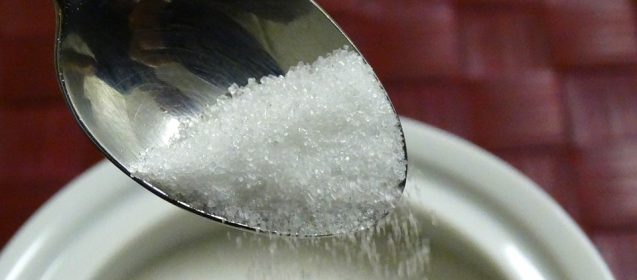
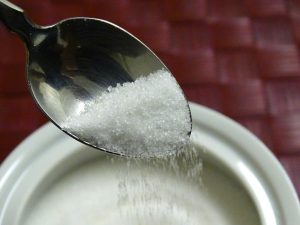 Which is better for you in the contest of sugar VS sweeteners. While artificial sweeteners have no or lower caloric value, they were voted the worse sweetener by Cleveland Clinic dietitians. That’s because they don’t satisfy the hunger for sugar, plus several other factors. Artificial sweeteners are better for you than sugar if you’re diabetic or prediabetic, since they don’t cause a spike in your blood sugar. However, consumed too frequently, they also are associated with insulin resistance, changes in gut bacteria and increased fat storage. Some, namely aspartame, has been shown to increase the risk of cancer in three separate animal studies, according to the dietitians.
Which is better for you in the contest of sugar VS sweeteners. While artificial sweeteners have no or lower caloric value, they were voted the worse sweetener by Cleveland Clinic dietitians. That’s because they don’t satisfy the hunger for sugar, plus several other factors. Artificial sweeteners are better for you than sugar if you’re diabetic or prediabetic, since they don’t cause a spike in your blood sugar. However, consumed too frequently, they also are associated with insulin resistance, changes in gut bacteria and increased fat storage. Some, namely aspartame, has been shown to increase the risk of cancer in three separate animal studies, according to the dietitians.
 An interesting study in the Journal of the American Geriatrics Society showed that diet soda adds inches to your waist if you’re a senior citizen. It used information from the San Antonio Longitudinal Study on Aging that followed 749 subjects of both Mexican-American and European-American heritage for 12 years. The study started in 1992 and ended in 2004. The findings were amazing and not at all what you might expect. Those who drank diet soda had waist measurements that were three times as large as the subjects who didn’t. Men fared worse than women. The larger the body mass, the bigger the increase was.
An interesting study in the Journal of the American Geriatrics Society showed that diet soda adds inches to your waist if you’re a senior citizen. It used information from the San Antonio Longitudinal Study on Aging that followed 749 subjects of both Mexican-American and European-American heritage for 12 years. The study started in 1992 and ended in 2004. The findings were amazing and not at all what you might expect. Those who drank diet soda had waist measurements that were three times as large as the subjects who didn’t. Men fared worse than women. The larger the body mass, the bigger the increase was.
 If you want to change any part of your life, set smart goals and achieve them. That’s especially true for weight loss or fitness goals. Smart is actually an acronym for a goal setting strategy that outlines how to create the goals to ensure you create a map that’s specific enough to achieve them. Setting goals is important. It acts like a road map for a trip. You identify where you want to get and the route you’ll take to get there. It also identifies how long it will take to achieve the goal.
If you want to change any part of your life, set smart goals and achieve them. That’s especially true for weight loss or fitness goals. Smart is actually an acronym for a goal setting strategy that outlines how to create the goals to ensure you create a map that’s specific enough to achieve them. Setting goals is important. It acts like a road map for a trip. You identify where you want to get and the route you’ll take to get there. It also identifies how long it will take to achieve the goal.
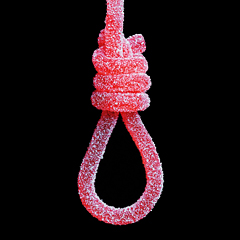 Is sugar ruining your health? The answer lies in how much sugar you eat and in what form. Do you eat processed foods? Are soft drinks the main way you hydrate? Is a candy bar your favorite mid afternoon snack? Some sugar is healthy. Lactose, sugar from milk products can be healthy. Fructose, the sugar from fruit also can be healthy. It’s only healthy when it comes in its natural container, fruit. Unfortunately, manufacturers have found a way to produce HFCH—high fructose corn syrup—and that it’s an inexpensive way to add sweetness and flavor to the foods they sell, so now it’s in everything. That means that the average American is loaded with sugar and that excess is what affects your health.
Is sugar ruining your health? The answer lies in how much sugar you eat and in what form. Do you eat processed foods? Are soft drinks the main way you hydrate? Is a candy bar your favorite mid afternoon snack? Some sugar is healthy. Lactose, sugar from milk products can be healthy. Fructose, the sugar from fruit also can be healthy. It’s only healthy when it comes in its natural container, fruit. Unfortunately, manufacturers have found a way to produce HFCH—high fructose corn syrup—and that it’s an inexpensive way to add sweetness and flavor to the foods they sell, so now it’s in everything. That means that the average American is loaded with sugar and that excess is what affects your health.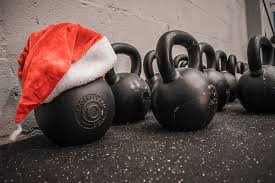



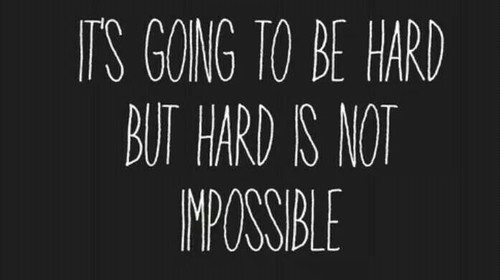
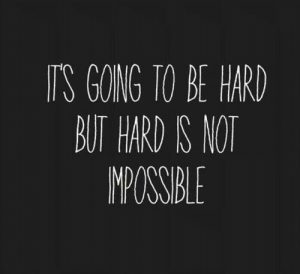 If you’re grossly out of shape or overweight, it may seem like too big of a goal to tackle. You must remember, it always seems impossible until it’s done. It can be done taking it one step at a time, which is why you need to break the goal down to mini goals that are not only less intimidating, but get faster results. You have to focus on smaller steps. Babies don’t just jump up and run across the room. They first crawl, then stand aided, next unaided and finally take a few steps. It takes babies 18 to 24 months to learn to run, yet they don’t give up because they never learned to feel defeated or overwhelmed.
If you’re grossly out of shape or overweight, it may seem like too big of a goal to tackle. You must remember, it always seems impossible until it’s done. It can be done taking it one step at a time, which is why you need to break the goal down to mini goals that are not only less intimidating, but get faster results. You have to focus on smaller steps. Babies don’t just jump up and run across the room. They first crawl, then stand aided, next unaided and finally take a few steps. It takes babies 18 to 24 months to learn to run, yet they don’t give up because they never learned to feel defeated or overwhelmed.